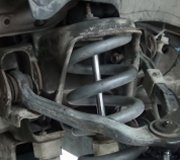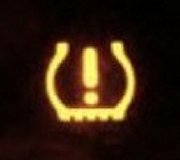Boy, this is a hard one to figure out. I'll bet it's related to your tires.
Ok, actually, I suspect your car needs a four-wheel alignment which is the industry standard. The rear wheels on your car have two adjustments for each one. Each wheel can be tipped in or out on top, (camber), and adjusted for the direction they're steering, (toe). The toe in or out on each wheel isn't so critical, but the two measurements taken together ARE critical for good tire wear. When total toe is out of specs, a feather-edge wear pattern develops on both tires. The road noise they generate is less noticeable when they are on the rear because of the lower weight on them. On the front, noise caused by tire wear is much more noticeable.
If I'm right, you can feel the feather-edge by rubbing your hand over the tires. Go around the circumference a few inches in both directions, then go from the outside to the inside and back again. Your fingers will go smoothly in one direction, but the other way, you'll feel a sharp raised edge. Those edges are formed by the tread sliding across the road from steering in a direction different than the other tire. Most mechanics will recommend a four-wheel alignment when they notice tire wear during routine service.
When you buy only two new tires, it is common to put them on the front and to leave or put the old ones on the back. Not sure why they did it the other way around. Besides the potential noise issue, worn tires on the front reduce traction in snow, and increase the possibility of hydroplaning in heavy rain or standing water.
If you leave the worn tires on the front, and if the front is in proper alignment, those tires will eventually wear flat most of the time. If they do, the noise will gradually go away. There are a few instances where the wear on the tires will continue to get worse but it's not real common for that to happen.
Caradiodoc
Wednesday, December 16th, 2009 AT 4:50 AM



